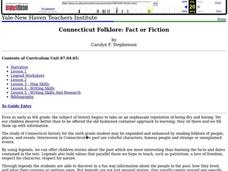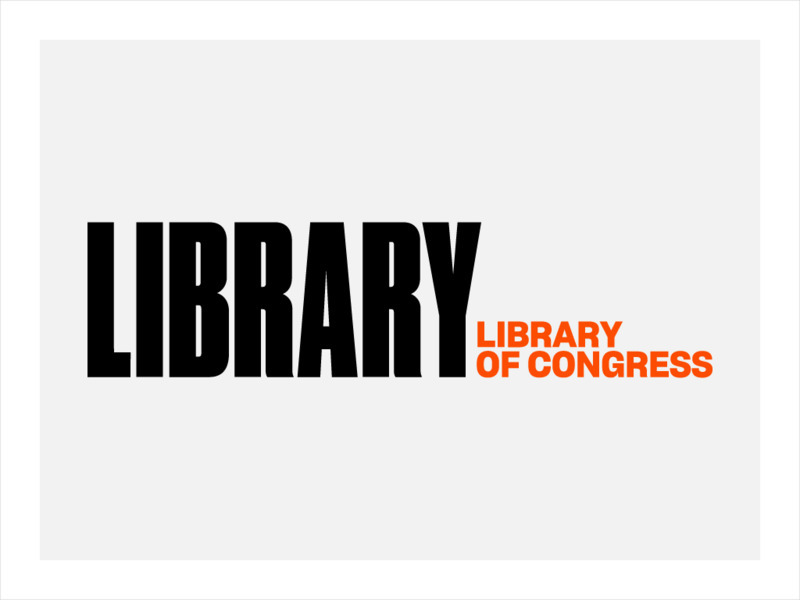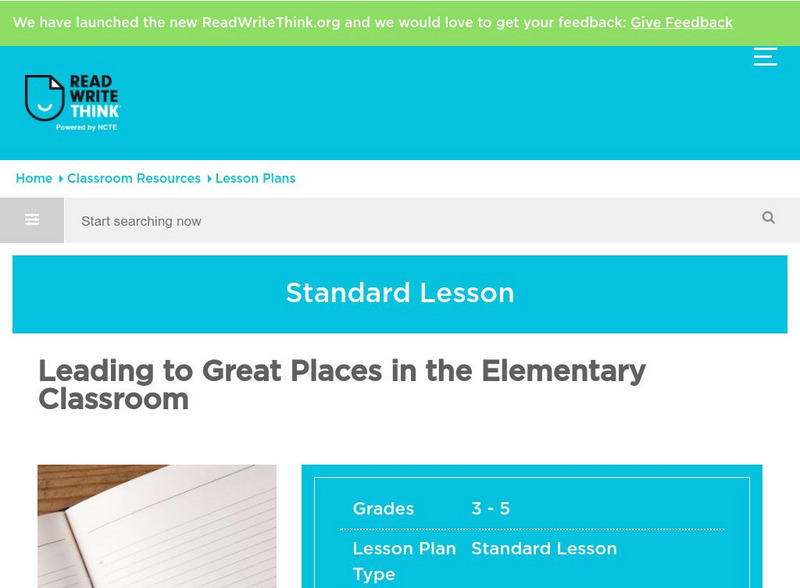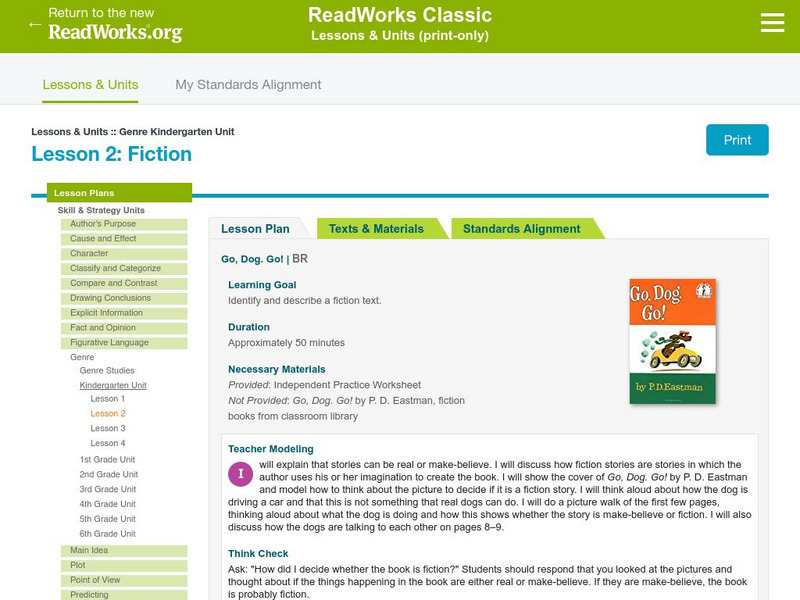Curated OER
Story Scrapbook
Pupils develop a comparison worksheet using one non fiction book and one fiction book they have read to be put into a class scrapbook. In their comparison students must have title, author, point of view, setting, characters, and other...
Curated OER
Juana Maria, the Real Lost Woman of San Nicolas Island
Students view a museum exhibit on Juana Maria. As a class, they describe the difference between real and fictional people and the difference between history and historical fiction. Using a map, they locate San Nicholas Island and...
Curated OER
Fictional Biographies
Students read and discuss the fictional biography, "Strega Nona: Her Own Story" by Tomie dePaola. They compare the characters of the story to other fictional characters then choose their own favorite fictional character to write a...
Curated OER
Historical Fiction: Introducting Novels into History
Ninth graders read a novel for their foreign language class which is also used in their history class. In groups, they work together to complete stations and other assignments.
Curated OER
Animal Reports (Lesson 6 - Use of Information
Fourth graders use the computer catalog to find and select a nonfiction book to gather bibliographic information on an animal they have previously selected. They write the information on a note card.
Curated OER
Media Scrapbook
High schoolers analyze the fundamental issues relating to Canadian parliamentary democracy through the exploration of media and public opinion. A scrapbook is created containing summaries of the work performed.
Curated OER
Is That a Fact, Harry?
Students use excerpts from books to determine whether sentences are fact, fiction, or opinion. They state reasons for their choices.
Curated OER
Thumbs Up to a Good Book!
Second graders read a short story and discuss whether they would give it a thumbs up or down and why. students write a group review on that story supporting why they gave it the up or down thumb. They choose and read a short story and...
Curated OER
Blending Fiction and Nonfiction to Improve Comprehension and Writing Skills
Students explore a content area by reading both fiction and nonfiction texts on the topic. They do more research online about the topic. After comparing the texts, they create their own written original work, using both narrative and...
Curated OER
Differences Between Fiction And Non-Fiction in the Library
Young scholars examine the differences between fiction and non-fiction books in the library by discussing kangaroos. They distinguish between facts about kangaroos, and using their imaginations and imagining what they would do with pet...
Curated OER
Connecticut Folklore: Fact or Fiction
Sixth graders read legends to learn the history of Connecticut in a fun informative way.
Library of Congress
Loc: Stephen Crane
This Library of Congress site provides a brief description of Crane's life as a war correspondent during the Spanish-American War and then provides some excerpts from some of his war correspondences. A bibliography of related works of...
abcteach
Abcteach: Mystery Book Report Form [Pdf]
Great printable page that helps students write a mystery book report form. Calls attention to characterization and clues.
Other
Merlyn's Pen
This is the official site of Merlyn's Pen, a magazine publishing student writing. It provides links for submitting student writing, thousands of published entries for your reading pleasure, a list of contests for students to enter,...
Other
Heart of Darkness
Complete text of Joseph Conrad's "Heart of Darkness," the inspiration for the movie "Apocalypse Now." It has been edited only to the extent that the web publisher has separated each chapter into five sections to fit his "Chapter a Day,"...
University of Toronto (Canada)
University of Toronto: Selected Poems of Stephen Crane
Full text of three Stephen Crane famous poems: "In Heaven, "A Man Said to the Universe", and "Should the Wide World Roll Away". Explanatory note and select bibliography.
ReadWriteThink
Read Write Think: Leading to Great Places in the Classroom
We all know that the most effective way to teach reading is to start with reading. This lesson uses that approach with writing story leads.
ReadWriteThink
Read Write Think: Animal Study From Fiction to Facts
Contains plans for five 50-minute lessons that ask students to compare and research information about animals from fiction and nonfiction texts. In addition to student objectives and standards, these instructional plans contains links to...
Other
Enjoying "Hamlet"
Introduction to Shakespeare and "Hamlet." Includes introduction, scene by scene synopsis with elaborate illustrations. Also background information concerning historical Hamlet, Saxo Grammaticus. "Historia Danica," Belleforest's...
Read Works
Read Works: Lessons: Go, Dog. Go!
[Free Registration/Login Required] A lesson plan and materials to teach kindergarten students to identify and describe a fiction text.
Read Works
Read Works: Lessons: Click, Clack, Moo: Cows That Type
[Free Registration/Login Required] A lesson plan and materials to teach kindergarten students how to tell the difference between fiction and nonfiction.
Other
Bab Books: On Line Stories and Resources for Kids
Collection of children's books online. Some of the books are "Talking books," and children can create their own story by using Adlib and even have the story read back to them.
Sophia Learning
Sophia: Forms
This slideshow lesson focuses on forms of fiction: short story, novella, and novel. It describes the defining characteristics of each, provides examples, and explains how to identify each.
Sophia Learning
Sophia: Historical Fiction
This slideshow lesson features the genre of historical fiction. It provides background information, common elements, literary examples, and practice. The practice consists of viewing pictures of Stonehenge and the Pyramids and thinking...














![Abcteach: Mystery Book Report Form [Pdf] Unit Plan Abcteach: Mystery Book Report Form [Pdf] Unit Plan](https://d15y2dacu3jp90.cloudfront.net/images/attachment_defaults/resource/large/FPO-knovation.png)








